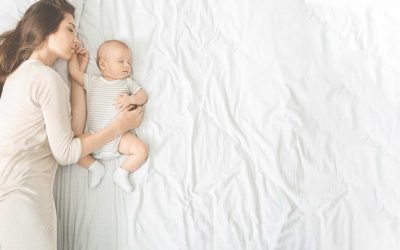Dina’s Safe Sleep for Infants 101
As I approach my third trimester I am re-reminded of the importance of safe sleep for infants. It is incredibly important to pay attention to where your baby sleeps, the sleeping position, temperature in the room, the kind of crib or bassinet and type of mattress. So many things to think about!
Creating a safe sleeping environment will lower the risk of Sudden Infant Death Syndrome (SIDS) and injuries.
What is SIDS?
SIDS occurs when an otherwise healthy baby dies unexpectedly while sleeping.
Causes of SIDS?
Unfortunately, we don’t know. These babies have an unknown cause of death even after full investigation and autopsy.
Many parents, including me, fear it.
Some things increase the risk of SIDS, including belly sleep position and parental smoking.
Where should baby sleep?
The Canadian Pediatric Society and American Academy of Pediatrics recommend babies sleep in a crib or bassinet in parent’s room. The child should be on his or her back. Sleeping in your room may decrease the risk of SIDS and allow for easier nighttime feeding.
Creating a safe sleep environment
Back to sleep
Babies should only sleep on their backs, with no baby sleep positioner or blankets around that can potentially cause suffocation.
Firm, flat sleep surface
Air mattresses, couches, pillows and waterbeds are unsafe sleep environments. If the surface is too soft, babies can roll and are unable to breathe.
Nothing in the crib
Leave blankets, pillows, stuffed animals and bumpers out of the crib.
Room temperature
Make sure the room is not too warm and that your child is not wearing too many layers. I suggest babies wear one layer more than parents in the same environment to keep them comfortable.
Do not smoke
SIDS is more common in babies exposed to cigarette smoke. Do not smoke around your child and don’t smoke while pregnant.
Ensure your crib is safe
Make sure your crib or bassinet meets Health Canada’s safety standards.
Bed sharing and co-sleeping with baby
Bed sharing can make breast feeding easier on babies and moms. Many babies will sleep better when sharing the bed with parents. However, this is a risky practice as adult beds and bedding are not made with babies in mind and can increase the risk of SIDS and suffocation. A baby can become trapped between the mattress and the wall, can fall off the bed, or an adult can roll on top of the baby, suffocating it.
Similarly, sleeping with a baby in a chair or couch is risky as the baby may become lodged between the couch cushions, or fall. This is especially true if the parent or caregiver has been drinking alcohol or using drugs.
Healthy Sleep for Babies Conclusion:
I suggest putting baby to sleep on his or her back, in a crib, in parent’s room, with nothing in the crib besides the baby.
For more on how much sleep babies need and how to get the whole family sleeping well.
Dina is a wife, mother of 4, and adrenaline junky. She loves to share children’s health information from her professional and personal experience. More About Dr Dina.










